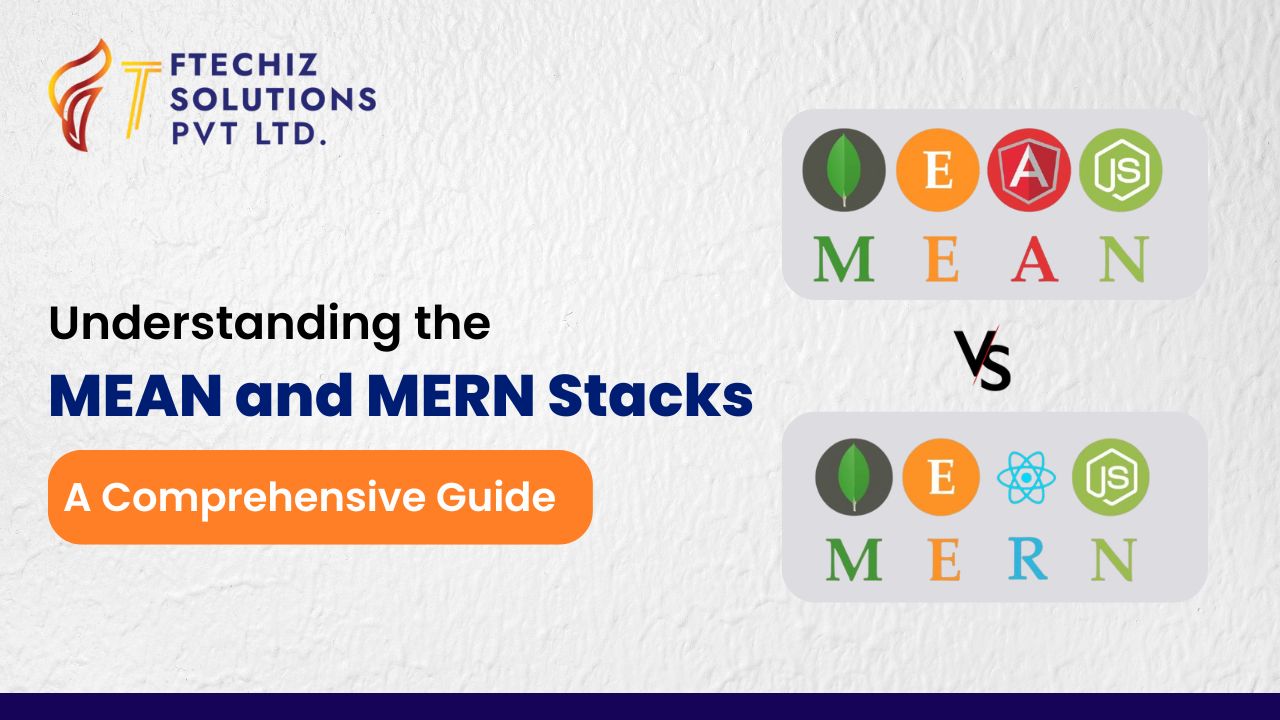
Understanding the MEAN and MERN Stacks: A Comprehensive Guide
Nowadays, every business wants to go online to build a website for their store, business, etc. When building a website, choosing the right tech stack becomes crucial as it can decide your business’ success. Today, there are two popular and widely used stacks in the JavaScript ecosystem: MEAN and MERN. Don’t worry if you do not know about these terms because you’re in the right place. In this blog, we’ll explore the MEAN and MERN stacks, compare them, and know their use cases.
We hope that by the end of the blog, you’ll have a clear understanding of both stacks and be able to determine which one best suits your project. So, let’s start.
What Are Tech Stacks?
Now that we know what tech stacks are let’s dive into our two stacks, MEAN and MERN. Whether you’re a web development beginner or a business owner looking to build a robust web application, understanding these stacks is important for everyone.
What is the MEAN Stack?
MEAN is an abbreviation for different frameworks. MEAN stands for MongoDB, Express, JS, Angular, and Node.js. All these frameworks are Java-based full-stack frameworks.
- MongoDB: MongoDB is a highly scalable NoSQL database suitable for applications where the data structure changes over time. Its versatility is due to its storage in a JSON-like file format.
- Express.js: Express.js is another MEAN stack framework. It is a lightweight backend web application framework for Node.js. Express.js provides robust features to develop server-side applications, simplifying the process of building web applications.
- Angular: Google launched Angular in 2011. It’s a powerful framework, and many developers prefer it to build rich and responsive single-page applications (SPAs). Angular is the only framework that is different in the MEAN and MERN stack.
- Node.js: Node.js is a JavaScript runtime built on Chrome’s V8 engine. It allows developers to use JavaScript for server-side scripting and build the entire front and backend application in JavaScript.
Advantages of MEAN Stack:
MEAN Stack offers many benefits to developers who build web applications. Below are some of those benefits.
- Full JavaScript stack: In MEAN Stack, both the frontend and backend use JavaScript, and developers can work on both parts without switching languages, which eases the development process.
- Open-source technologies: All frameworks and components of the MEAN stack are open-source. Hence, they are free to use and are continuously updated and improved by the community.
- High scalability: Scalability is essential as the business grows, and in MEAN Stack, MongoDB’s flexible schema design makes it easy to scale applications as they grow.
- Angular’s capabilities: As stated above, Angular is the only framework that differs between the MEAN and MERN stacks. Angular offers great tools for building dynamic and interactive user interfaces in the MEAN stack.
I think I have praised the MEAN stack enough. Now, let’s take a look at its limitations. Every coin has two sides, and the MEAN stack is no exception.
Limitations of MEAN Stack:
- Learning curve: Angular makes all the difference. Angular is a complex language to learn, and it genuinely has a steep learning curve, especially for newbies.
- Less flexibility on the frontend: Angular is opinionated, meaning it has a set way of doing things, which can limit flexibility for developers who prefer other frontend frameworks.
MEAN vs. MERN: Key Differences
| Comparison | MEAN Stack | MERN Stack |
| Frontend Frameworks | Angular in the MEAN stack is a comprehensive framework that provides a full set of tools and features. It also supports two-way data binding and allows real-time updates between the model and view. | React in the MERN stack is more flexible than Angular, but it only focuses on the view layer. Hence, developers have to choose other libraries for state management and routing. |
| Data Binding | Angular supports two-way data binding, automatically updating UI changes with the model and vice versa. This is beneficial for real-time applications. | React supports one-way data binding, which makes debugging easier as the data flows from the model to the view. |
| Learning Curve | Angular is a comprehensive framework that offers several features, which also means that there will be a steeper learning curve. | React is easier to learn, especially for developers who are already familiar with JavaScript. However, it requires additional libraries, which sometimes increase complexity. |
| Performance | As mentioned above, Angular uses two-way data binding, which can sometimes be less efficient in large applications, especially when developers deal with a lot of real-time data. | React utilizes virtual DOM and offers superior performance, especially for applications with frequent UI updates. |
Conclusion
In the digital world, having an application or online presence for your business is a must to compete in the market. Both the MEAN and MERN stacks have strengths and weaknesses, and choosing the right stack completely depends on your project’s goals, team expertise, and scalability requirements. MEAN’s Angular is excellent for large-scale enterprise applications with complex data interactions, while MERN’s React is perfect for fast, dynamic, and flexible user interfaces.
You may also like :-
FAQs
A: Yes, in React, you can integrate the MEAN stack effectively and turn it into the MERN stack.
A: React is easier to learn than angular, making MERN easier to learn compared to MEAN Stack.
A: Both MEAN and MERN are popular, but when it comes to choosing one, MERN is preferred for its flexibility and React’s dominance in the frontend development world.
A: Yes, you can build mobile apps using frameworks like React Native (for MERN) or Ionic (for MEAN).


